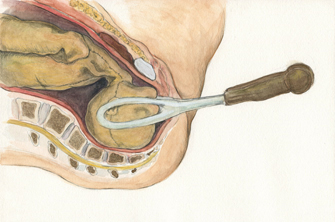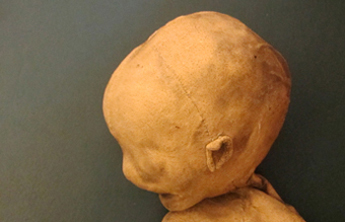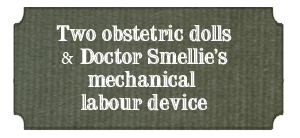THE RISE OF THE MAN-MIDWIFE
The use of forceps was central to Smellie’s training of men-midwives, which would bring about vocational competition with the traditional female midwife, who was trained by apprenticeship, licensed by the church, and typically present at home births. Men-midwives were frequently medically qualified and had forceps and other tools at the ready when summoned to aid with delivery. The difficult tension between both parties proved disadvantageous for expectant mothers: traditional midwives were on occasion hesitant to admit failure and call in a medical practitioner, while medical practitioners, who would often accuse their female counterparts of using outdated ancient practices, were known to blame midwives in instances of fatality to which they had been summoned due to medical complications, saying that they had been invited too late in the labour process to save the patient/child.1 This is also the subject of a prominent letter of dissent by fellow medical practitioner William Douglas in 1748, in which he points out that the fact that the courses were open meant potentially anyone (not just medical practitioners) could become a midwife, which could of course create many problems within the practising world. ➡
NOTES | 1. Allotey, 2011


It is not known what Smellie's woman 'machine' looked like. Above is the anatomy surrounding the womb and the positioning of the forceps on the baby's scalp, as may have been demonstrated with the help of the obstetric dolls. This would have been particularly helpful practise for dealing with difficult labours: ( above l) face presentation | schematic drawings by Stef Lenk (above r) one of the dolls heads | photo by Stef Lenk
